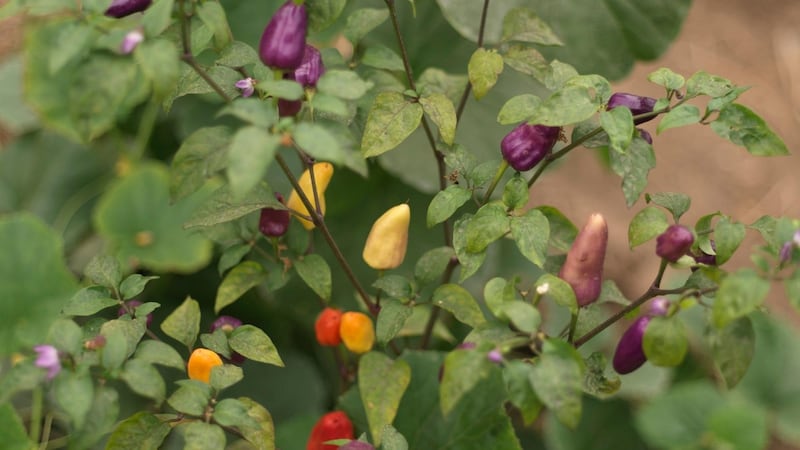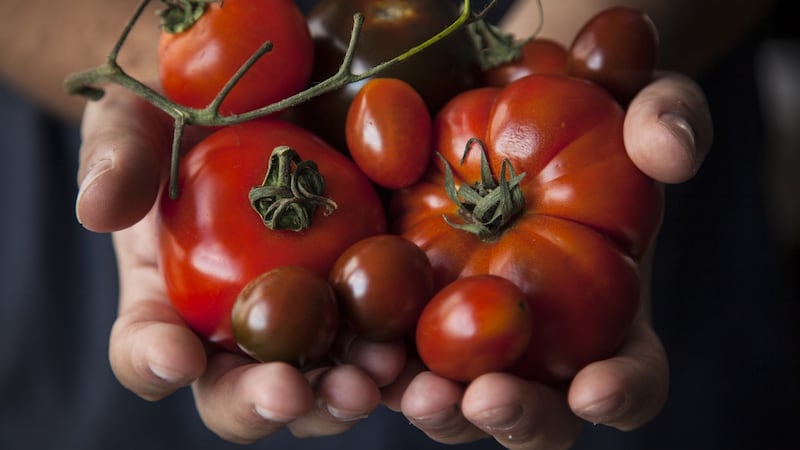If you love to grow even a little of your own food, then tomatoes – or ‘love apples’ as they’re sometimes known – are almost certainly one of your all-time favourite crops to raise from seed each spring. What kitchen gardener doesn’t relish the annual ritual of watching those baby seedlings emerge from the warm seed compost like a clutch of newborn hatchlings, or savour the thrill of helping them grow into maturity. Best of all, of course, is the outstanding flavour and evocative scent of those juicy, sun-ripened fruits plucked fresh from the plant, something with which no shop-bought equivalent can ever compete.
But with up to 25,000 varieties and numerous different types of tomato, including grape plum, cherry, beefsteak and ox-heart, to choose from, how do you whittle your selection down to a trusty handful? Part of the answer is to try to concentrate on varieties with a proven track record as regards flavour, productivity, vigour and disease-resistance. All this aside, your final selection should also depend greatly on the kind of growing conditions you can offer your plants. Remember that the tomato (Solanum lycopersicum) is a heat- and light-loving species that's native to the western coast of South America, where it enjoys a long, hot growing season. Given Ireland's typically short, cool, damp summers, it's not surprising the majority of varieties require the additional warmth and protection of a polytunnel, glasshouse or sunny porch in order for them to flourish and their fruit to properly ripen. Ignore this basic fact and instead of enjoying handfuls of deliciously ripe 'toms', you'll find yourself glumly contemplating yet another batch of green tomato chutney.
What about gardeners without these sorts of sheltered growing spaces? Well, then you need to choose a variety that's proven itself capable of setting fruit and ripening outdoors in a less-than-perfect summer, such as the very tasty, ultra-early-cropping salad-type tomato known as 'Latah'. So remarkably early is this American-bred variety to ripen, says Madeline McKeever of Cork-based Brown Envelope Seeds, that last year she started picking the fruit in early June.

Many (but not all) of the more cold-tolerant, early-ripening varieties like ‘Latah’ are what are classified as ‘bush’ or ‘determinate’ tomatoes. Unlike their taller, higher-maintenance vine/ cordon/ ‘indeterminate’ tomato cousins that are typically grown under cover in Irish gardens, they require little in the way of support – nor do they need to be laboriously and time-consumingly side-shooted or pruned. But it’s still vital to give them a sunny, sheltered spot outdoors if they are to be healthy and properly productive. And, of course, if you can grow them under cover, then they will be even better again.
Hanging basket
Where growing space is at a premium, the most compact/dwarf kinds of these more cold-tolerant, early-ripening bush tomatoes are also a great choice for a pot, window-box or hanging basket. An example is the very early, delicious cherry-type variety known as ‘Maskotka’, which produces an abundance of small, juicy, scarlet fruits throughout the summer. Another is the ever-popular ‘Sungold’, whose small, orange fruits are famed for their sweetness.
Some varieties of vine/indeterminate-type tomatoes – for example, the exceptionally early-fruiting, salad-type known as ‘Stupice’ – will also successfully ripen outdoors in a warm, sunny, sheltered spot. But, as a rule, these taller, more labour-intensive kinds are much slower to set fruit and to ripen and so they need the protection of a polytunnel, glasshouse or sunny porch. If you can offer plants this kind of protected growing space, then the choice is far greater. Examples of outstanding varieties that thrive in these sorts of bright, warm and ultra-sheltered conditions include ‘Paul Robeson’, an utterly delicious Russian heirloom variety with medium-sized, meaty, dusky red fruits; ‘Pantano Romanesco’, another vigorous, heritage beefsteak variety that produces very large, flavoursome fruits; and ‘Costoluto Fiorentino’, a versatile, high-yielding, very tasty variety with large, plump, ribbed red fruits that are suitable for using in a salad or for cooking. While seed of the once hugely popular plum tomato ‘Rosada’ is sadly no longer available (a result of EU regulations), an excellent substitute is the exceptionally flavoursome ‘Santonio’.
Whichever varieties you choose, sow the seed between mid-February and late March into seed trays or one-litre pots filled with a good-quality seed compost, ideally warmed by a heated propagator to a temperature of 21ºC and placed in a spot that’s bright and draught-free. Once the young seedlings have developed their first set of true leaves, gently prick them out into small individual pots and give them the brightest spot you can find. It should be well away from cold draughts and warm enough (15-18ºC) that plants don’t suffer a check to their growth but not so warm that it encourages soft, sappy growth. Wait until late spring to harden them off before moving them into their final growing positions in the polytunnel/ glasshouse, and later again (early summer) if you plan to grow them outdoors. The result, with a little TLC, will be love apples in a cool climate – so much nicer than a larder full of green tomato chutney, don’t you think?

[ brownenvelopeseeds.comOpens in new window ]
This week in the garden
If you want to bag seed potatoes of your favourite varieties, then now’s the time to do it while stocks are still high. Specialist online Irish stockists include mrmiddleton.com and fruithillfarm.com, while you’ll also find them in stock in all good garden centres at this time of year. Remember that traditional maincrop varieties are most vulnerable to attack from blight, so if this has been a recurring problem in your garden or allotment, concentrate on early varieties and/or those with proven blight-resistance such as ‘Sarpo Axona’, ‘Vitabella’. ‘Alouette’, ‘Carolus’ and ‘Bionica’.
Witch-hazels (Hamamelis) are one of the most beautiful of flowering shrubs at this time of year, with their bare branches covered in a multitude of spidery, deeply-scented blooms in shades of gold, copper, russet and burnt orange. While eventually forming a sizeable shrub, they are famously slow-growing, making them a suitable choice for even a small garden. If they eventually do become too large for your liking, then they can be kept relatively compact with an annual spring prune, which will also encourage the plants to be more floriferous (after flowering, cut the previous year's growth back to two buds). Where space is really tight, they can also be successfully grown as fan-trained specimens against a wall. The best time to buy young plants is now. Not only do garden centres stock a wider choice of varieties at this time of year but you can also be sure of what you're getting.
Along with tomatoes, February is a good time to sow seed of other heat-loving food crops including aubergines, peppers and chilli peppers. All of these require generous, steady heat to guarantee successful germination so if you own an electric propagator, then this is the time to put it to good use. The following is a guide to the optimum temperatures required by these plants for successful germination: aubergines (25-30ºC), chilli peppers (25-30ºC), tomatoes (20-25ºC), peppers (26-29ºC).
Dates For Your Diary
Wednesday, 14th February (8pm), Kill O'The Grange Parish Centre, Kill Lane, Dún Laoghaire, Co Dublin: Ruairí Ó Dúlaing, senior parks superintendent for Dún Laoghaire Rathdown, will talk on 'Parks in the 21st Century' on behalf of South County Dublin Horticultural Society (visitors €5).
Friday, February 16th-Sunday, February 18th, Renvyle House, Co Galway: 'Kitchen Gardening Weekend', with guest speakers Joy Larkcom, Klaus Laitenberger, Kitty Scully and Anya Gohlke, €195, see renvyle.com.
Saturday, 17th February, Crown Plaza Hotel, Northwood Park, Santry, Dublin 9: 'The Designed Garden', the GLDA's International Garden Design Seminar with guest speakers Douglas Hoerr, James Basson, Peter Korn and June Blake, tickets €50-€95, see glda.ie.
















